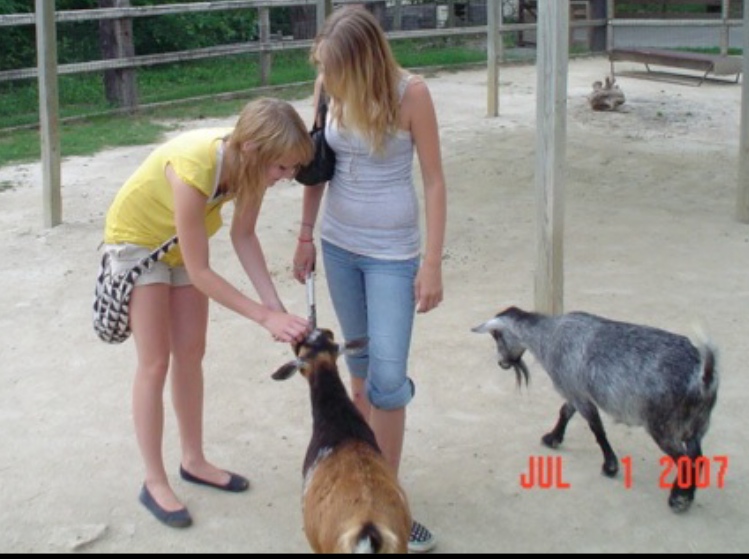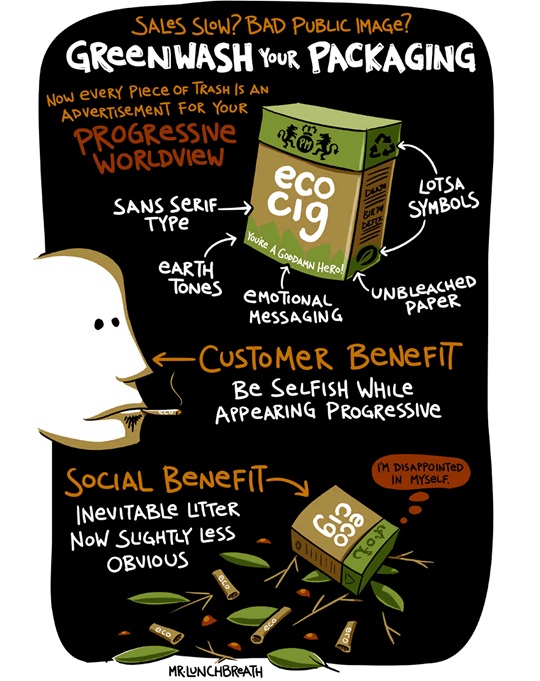I never thought Chapman would finish — his degree, his fantasy football, and especially this paper.
We’ve been talking about food safety stories since at least 2002. I knew from research done in the 1990s about food and dieting and the power of .jpg) exemplars – personal examples to get people’s attention. Chapman dug into the literature and found references going back decades.
exemplars – personal examples to get people’s attention. Chapman dug into the literature and found references going back decades.
The storytelling approach has underpinned much of what we’ve done over the past seven years, including food safety infosheets and the posts in barfblog.com. Now we, along with our colleague Tanya MacLaurin of Guelph (who used to be at Kansas State, go figure) can say, see, these things work. And here’s how it’s done.
From the K-State press release this morning:
Food safety advice may fail because it’s too prescriptive — wash your hands, use a thermometer — and it often doesn’t include stories to make such information relevant. Researchers at North Carolina State University, Kansas State University and the University of Guelph have found that using short food safety stories with vibrant graphics can be a better training tool for food service workers.
A new paper by the researchers in the British Food Journal details the concept, creation and distribution of food safety infosheets, like those found at http://foodsafetyinfosheets.wordpress.com/. These single-page .jpg) posters are created around a current food safety issue or outbreak, and are supplemented with graphics and information targeted at the food service industry. The infosheets are used to provide food safety risk-reduction information to generate behavior change and support a food safety culture.
posters are created around a current food safety issue or outbreak, and are supplemented with graphics and information targeted at the food service industry. The infosheets are used to provide food safety risk-reduction information to generate behavior change and support a food safety culture.
"Food safety infosheets were designed with the goal of communicating risk reduction messages with the objective of changing behavior," said Ben Chapman, assistant professor in the department of 4-H youth development and family and consumer sciences at North Carolina State. "These infosheets differ from much of what is currently used in training, because we focus on the consequences of mishandling food by providing real examples taken from recent events."
A recent food safety infosheet detailed an outbreak of E. coli O157 linked to a festival in Winnipeg, Canada, that sickened 40. Another focused on food preparation and cooling for large crowds, sparked by an outbreak at a church turkey dinner in Kansas that sickened 159.
"Whether it’s a waitress, a line cook or the stock boy, people learn through stories," said Doug Powell, an associate professor of food safety at K-State. "We want to reach out to the last person who touched your food and make it safer."
Over the course of two years and using multiple methods, food safety infosheets transformed from a text-heavy memo to compelling, story-laden posters supported with contextual messages on what a food handler could do to reduce food safety risks, according to the researchers.
As part of the design phase of the infosheets, Chapman spent 185 hours working as a dishwasher in a local restaurant.
"We felt it was important to really immerse into the culture of a food handler, and get a better understanding of what types of conversations occurred and what the hierarchy was like," Chapman said. "The experience directed us to refocus our messages to be a bit edgier and include references to celebrity and music where possible."
Food safety infosheets at http://foodsafetyinfosheets.wordpress.com/ are created semi-weekly and are posted in restaurants, retail stores and on farms. They also are used in training throughout the world. Since September .jpg) 2006 more than 150 food safety infosheets have been produced. They are available for download at no cost. The website has been recently redesigned, adding a search function, automatic e-mail alerts and RSS feeds. The new database is also sortable by pathogen, location and risk factor.
2006 more than 150 food safety infosheets have been produced. They are available for download at no cost. The website has been recently redesigned, adding a search function, automatic e-mail alerts and RSS feeds. The new database is also sortable by pathogen, location and risk factor.
Citation and abstract:
Food safety infosheets: Design and refinement of a narrative-based training intervention
British Food Journal, Vol. 113 Iss: 2 (pre- print edition)
Benjamin Chapman, Tanya MacLaurin and Doug Powell
http://www.emeraldinsight.com/journals.htm?issn=0007-070x&volume=113&issue=2&articleid=1895862&show=abstract
Purpose – Despite extensive investments in food handler training, research suggests that training programs are inconsistent, and rarely evaluated for efficacy. The generic prescriptive content and school-like delivery methods used in current food safety training may be a barrier to application. The purpose of this research was to develop a food safety communication tool, food safety infosheets, targeted specifically to foodservice food handlers utilizing popular media stories to illustrate the consequences of poor food handling.
Design/methodology/approach – Food safety infosheets were designed to be surprising, connect food handlers’ actions and consequences, and generate discussion through a verbal narrative framework. A Delphi-like exercise (n = 19), a posting pilot (n = 8) were carried out to assess the appropriateness of the concept of food safety infosheets. An intense participatory ethnographic study with an Ontario, Canada restaurant, and in-depth interviews with food service operators in Manhattan, Kansas, and Lansing, Michigan (n = 17) were conducted to gather qualitative data on the food service kitchen environment, including barriers to food safety practices, and the communication preferences of those who work in such kitchens.
Findings – The expert group, foodservice operators, and food handlers accepted food safety infosheets as an appropriate concept and valued storytelling as an effective communication strategy. Learning in the .jpg) kitchen environment is largely hands-on and visual, and time pressure dictates practices. It is often difficult to attract and keep the attention of food handlers. Storytelling, celebrity and local outbreaks are of interest to the target audience.
kitchen environment is largely hands-on and visual, and time pressure dictates practices. It is often difficult to attract and keep the attention of food handlers. Storytelling, celebrity and local outbreaks are of interest to the target audience.
Originality/value – This research provides a blueprint for the design and refinement of food safety communication tools targeted towards a specific audience. By utilizing multiple methodologies, this article provides a framework for other researchers to follow.
 But when it comes to urgent queries about issues like suicide, rape and heart attacks, phones can be pretty bad at offering good medical advice, a new study suggests.
But when it comes to urgent queries about issues like suicide, rape and heart attacks, phones can be pretty bad at offering good medical advice, a new study suggests.
.jpg) today, with nary a mention of thermometers.
today, with nary a mention of thermometers..jpg) exemplars – personal examples to get people’s attention. Chapman dug into the literature and found references going back decades.
exemplars – personal examples to get people’s attention. Chapman dug into the literature and found references going back decades..jpg) 2006 more than 150 food safety infosheets have been produced. They are available for download at no cost. The website has been recently redesigned, adding a search function, automatic e-mail alerts and RSS feeds. The new database is also sortable by pathogen, location and risk factor.
2006 more than 150 food safety infosheets have been produced. They are available for download at no cost. The website has been recently redesigned, adding a search function, automatic e-mail alerts and RSS feeds. The new database is also sortable by pathogen, location and risk factor. Or NZFSA is following what New South Wales, Australia, did a couple of months ago for a book that has been available since Aug. 2009. Regardless, it seems extraordinary that government agencies are calling people on their food safety bullshit.
Or NZFSA is following what New South Wales, Australia, did a couple of months ago for a book that has been available since Aug. 2009. Regardless, it seems extraordinary that government agencies are calling people on their food safety bullshit.
 In interviews with dozens of so-called chefs around the U.S., not one mentioned the use of a tip-sensitive digital thermometer to ensure a final, safe temperature of 160F, or that
In interviews with dozens of so-called chefs around the U.S., not one mentioned the use of a tip-sensitive digital thermometer to ensure a final, safe temperature of 160F, or that .jpg) This falsehood is routinely repeated
This falsehood is routinely repeated.jpg) Correspondence between senior Ontario and federal bureaucrats obtained under an access to information request reveal disparities in hand washing advice, as discovered by an Ontario health official who surveyed government health websites looking for advice.
Correspondence between senior Ontario and federal bureaucrats obtained under an access to information request reveal disparities in hand washing advice, as discovered by an Ontario health official who surveyed government health websites looking for advice..jpg)
 Except they call it ‘viral,’ encasing the word in what speakers would call “air quotes” or what Jon Stewart of the Daily Show recently called “dick fingers.” I call it bad writing.
Except they call it ‘viral,’ encasing the word in what speakers would call “air quotes” or what Jon Stewart of the Daily Show recently called “dick fingers.” I call it bad writing.